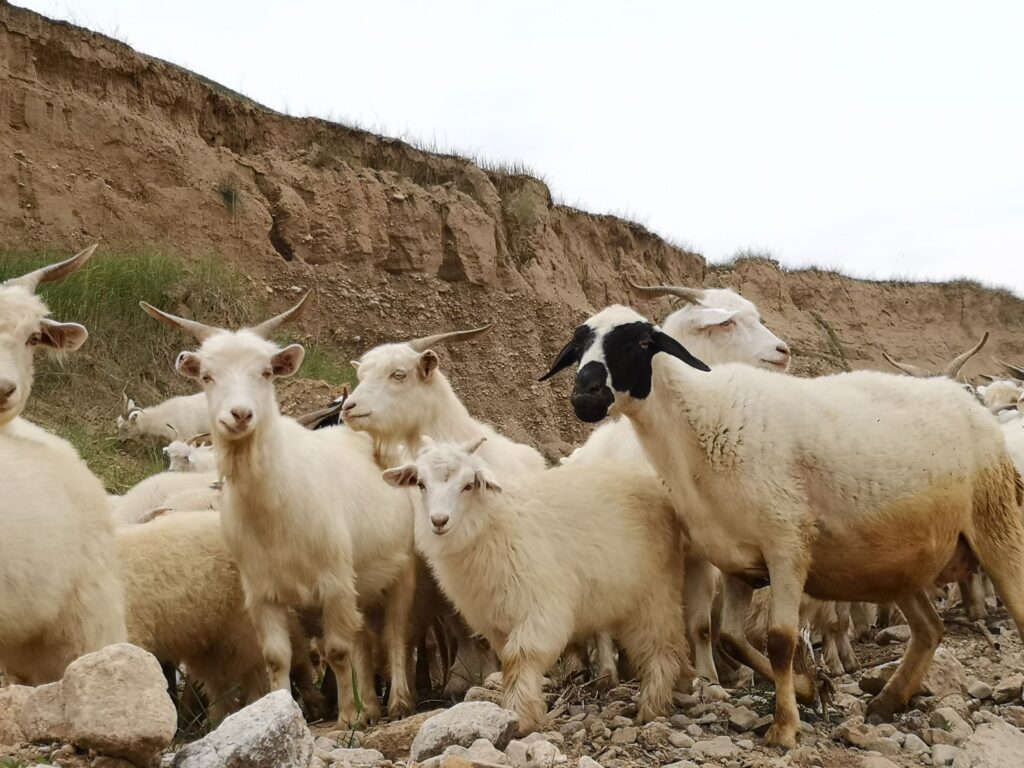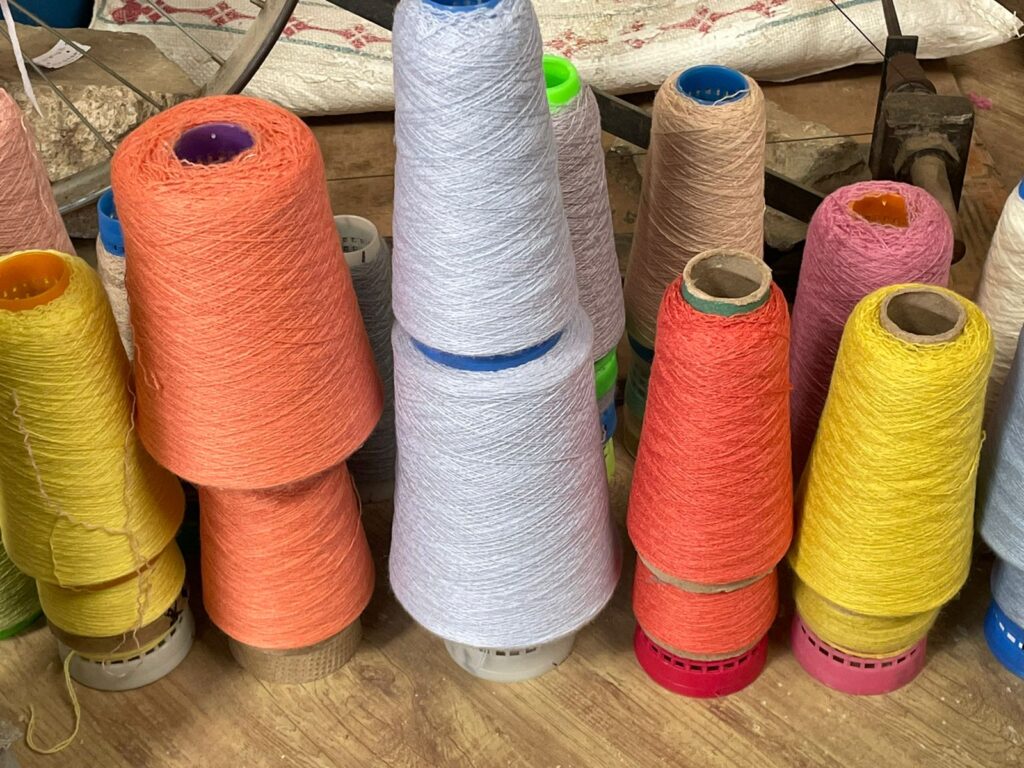
We unravel the secret life of this much-desired Yarn, Cashmere.
Cashmere is rightly, considered the jewel in the crown of fabrics. It is the most precious and luxurious of fabrics, with a history spanning over centuries and involving some of the most isolated parts of the planet.
Despite its humble origins, cashmere wool is now coveted by designers all over the world, and its widespread availability means that it is now more accessible than ever.
What is Cashmere and Where Does it Come From?

Cashmere is a type of wool that is characterized by the fineness of its fibers. The softness and luxuriousness of cashmere come from the fact that the fibers are almost silky and pure cashmere can be expensive due to the involved production process, which includes separating the fibers from molted goat coats by hand.
Cashmere Origin Country- Kashmir region of India.
Why is the luxurious natural fabric that has its origins in Nepal, Mongolia, and China named after the Indian province?
Biblical references and Afghan historical texts mention the production of wool scarves in Kashmir and prove that the process goes back as far as the 3rd century BC.
It is thus proven that people used these fine fibres for thousands of years in Mongolia, Nepal, and Kashmir.
(A) “Cashmere” Origin of Word
Because the processing of the wool was first developed in the region of Kashmir; the name of the region has thus become the generic name of the fabric.
(B) When was cashmere invented (Story from Kashmir to Cashmere)
Production of wool under the name cashmere began when Ali Hamdani fetched some fine undercoat fibers from a cashmere goat and made socks, scarves, and caps. He gave socks to the King of Kashmir and recommended that the King start making scarves from this wool.
Afterwards he gifted those socks to the king of Kashmir, Sultan Qutubdin (1374-89 AD). The Sultan was amazed by their durability and fineness. That was the starting point of the usage of the cashmere wool.
(C) What is cashmere made of

Historically, fine-haired cashmere goats have been called Capra hircus laniger. However, they were a subspecies of the domestic goat Capra hircus. They are now more commonly considered part of the domestic goat subspecies Capra aegagrus hircus or the alternate version Hircus Blythi Goat.
cashmere wool production for clothing is start from obtaining hair from the neck and underbelly region of Cashmere goats. Cashmere goats are found in Himaliyan region of Indian content, Ladakh, Kashmir, Nepal, Pakistan, Mongolia, China, etc. These goats produce a double fleece that consists of a fine, soft undercoat of hair. These hair then mingled with a straighter and much coarser outer coating of hair, called guard hair.
For the fine undercoat to be sold and processed further. It must be de-haired. This is a mechanical process that separates the coarse hairs from the fine hair.
After dehairing, the resulting cashmere is ready to be dyed, knitting, weaving and then convert yarn to premium garments. The remaining long, coarse hair is typically clipped from the goats and is often used for brushes and non-apparel use.
Pure cashmere can be dyed and spun into yarns and knitted into jumpers, sweaters, hats, gloves, socks and other clothing. First hair wool into fabrics then cut and assembled into garments. The outcome of cashmere wool is outer coats, jackets, trousers (pants), pajamas, scarves, blankets, and other items.
(D) Benchmark for Cashmere
In the United States, under the U.S. Wool Products Labeling Act of 1939, as amended, (15 U. S. Code Section 68b(a)(6)), a wool or textile product may be labelled as containing cashmere only if the following criteria are met:
-
- Such wool product is the fine (de haired) undercoat fibres produced by a cashmere goat (Capra hircus laniger);
- The average diameter of the fiber of such wool product does not exceed 19 microns; and
- Such a wool product does not contain more than 3 percent (by weight) of cashmere fibres with average diameters that exceed 30 microns.
- The average fiber diameter may be subject to a coefficient of variation around the mean that shall not exceed 24 percent.
How cashmere reached Europe from the Indian Himalayan Region?
The Capra Hircus, commonly known as Pashmina goat. These goat breed reside in the Himalayas of Tibet and Ladakh. Typically found around the altitude of 4,000 meters in the Himalayas of Tibet and Ladakh. Also, Mongolia is home for a majority of these cashmere goat.
Fast forward to the late 18th century and the first historical evidence of cashmere trading becomes apparent. Cashmere shawls were being exported from Kashmir to the western world, to France and Britain in particular. These shawls were worn by upper-class womens, who draped them around their shoulders, keeping themselves stylishly warm.
The cashmere craze first started in France. When the General in Chief of the French campaign in Egypt sent one shawl to his wife in Paris. In the early 19th century, the Empress Josephine was rumoured to have hundreds of cashmere shawls.
The arrival of the scarf seemed to have sparked great enthusiasm. People made plans to begin manufacturing of luxurious fabric in France, centuries later. Cashmere featured mainly in jumpers and cardigans.
In the 19th century, the Kashmir shawl reached Europe from Colonial India.
Countries Produce Cashmere in 2024
In more recent times, the animals have begun to inhabit many other regions such as Australia and China. Although there are smaller farms throughout many countries across the globe.
Cashmere has been manufactured in Mongolia, Nepal and Kashmir for thousands of years. The fiber is also known as pashm (Persian for wool) or pashmina (Persian/Urdu word derived from Pashm). Handmade pashmina shawl is the specialty of Kashmir.
China has become the largest producer of raw cashmere, estimated at 19,200 metric tons (in hair) per year (2016). Mongolia follows with 8,900 tons (in hair) as of 2016, while Afghanistan, Iran, Turkey, Kyrgyzstan and other Central Asian republics produce lesser amounts.
A number of countries produce cashmere and have improved processing techniques over the years, but China and Mongolia are two of the leading producers as of 2019.
Globally, China, Mongolia, Iran, Nepal and Afghanistan have become the major cashmere producers and exporters.
The Global Pure Cashmere 2022 market was valued at USD billion in 2020 and is predicted to increase at a compound annual growth rate (CAGR) of CAGR from 2021 to 2027.
Cashmere Inquiry